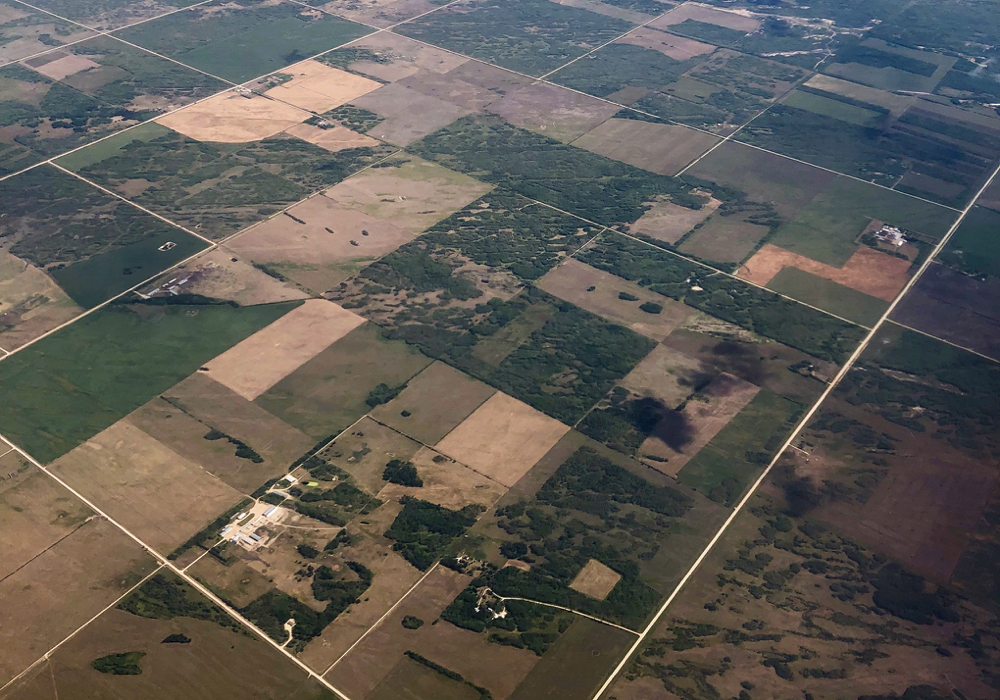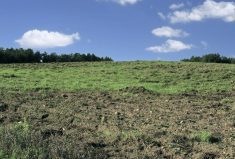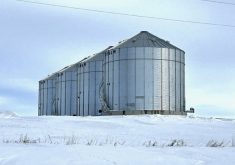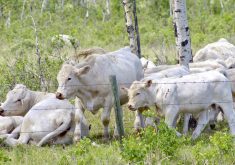The only way for a young person to acquire farmland, the joke goes, is through the church, since it takes a funeral or a wedding.
An inheritance or marriage aren’t the only ways, but the quip underscores that high land prices make it difficult for beginning farmers.

“It’s extremely frustrating for me and many young farmers in this area (near Elie, Man.),” Rauri Qually said during the Keystone Agricultural Producers’ (KAP) advisory council meeting held via ZOOM July 30. “We want to farm, we want to buy new equipment, we want to help our communities and economy grow, but if we aren’t even allowed to take a bat up to the plate, how can we have a chance at any of this?”
Some KAP members suspect foreign money and conservation groups are driving up land prices so KAP is investigating if changes are needed to the Manitoba Farm Lands Ownership Act. Passed in 1984, it allows only Canadians to buy more than 40 acres of Manitoba farmland. However, foreigners can apply to the Manitoba Farm Industry Board (MFIB), which oversees the act, for an exemption.
Read Also

Local farm businesses, groups look forward to Manitoba Ag Days 2026
Most of agriculture is seemingly at Manitoba Ag Days each January: Manitoba agribusinesses and farm groups look forward to connecting with farmers at the 2026 show.
Why it matters: Some farmers suspect foreign money and conservation groups are pushing farmland prices higher, making it tough for beginning farmers. Meanwhile, established farmers welcome the equity their land provides, while soon-to-retire producers (or their estates) want the best price they can get.
When someone buys more than 40 acres of Manitoba farmland they must declare in writing they are eligible, Marnie Carey, a program specialist for the MFIB told the KAP meeting. Buyers have to be Canadian citizens or permanent residents.
Canadian co-operatives and companies can also buy Manitoba farmland. Canadian-based publicly traded companies cannot because some shareholders could be foreigners.
The act’s purpose is to maintain opportunities for Canadians to acquire farmland in Manitoba for farming and to support the development of strong, rural communities, Carey said.
KAP president Bill Campbell questions whether the act provides enough protection.

“It seems like it was relatively loosely legislated,” he said in an interview. For example, foreigners and conservation groups can apply for an exemption.
“The two key factors that the board looks at are for these exemptions — does it confer significant benefit to the province and public interest?” Carey said.
In 2019-20 the MFIB received 57 exemption applications and approved them all, an official with the Manitoba government wrote in an email Sept. 28.
The MFIB usually gets between 50 and 70 applications a year, Carey said.
“Generally most applications are approved.”
Most applications come from conservation groups, including the Nature Conservancy of Canada (NCC) and Ducks Unlimited Canada (DUC), she said. Both organizations are ineligible under the act to buy land without MFIB approval because their funding includes money from foreigners.
“The last few years we’ve had applications from people coming from South Africa, Paraguay and the United Kingdom,” she said.
In most cases they intend on becoming Canadian citizens, which will make them eligible to buy Manitoba farmland, Carey said.
If the MFIB grants an exemption it follows up to see that the applicants have become citizens, she added.
“We do conduct investigations,” Carey said. “If members of the public have concerns about sales that they have seen in their local area — it’s a complaint-based system — so they can direct their concerns to our office for investigation and we require the name of the landowner, the land description and other details in writing.”
The act’s focus on foreigners is narrow in scope.
“I think we’d like to understand better the extent to which farmland is being sold to people out of the province or corporations or whoever,” KAP general manager Patty Rosher said in an interview Sept. 28.

Campbell suspects foreign capital is entering the farmland market.
“To think that there is no foreign money involved in some of this land is naive,” he said. “There are investment companies in Saskatchewan and Manitoba that will purchase land but nobody asks where their money comes from. You can have a name on the front of it.”
Campbell also believes conservation groups push up farmland prices.
“They’ve got a pocketful of money and… just inflate that price,” he said. “It’s like another bidder at an auction sale.”
DUC and NCC disagree.
“I recognize we are a player on the landscape and when we buy land that’s land someone else didn’t buy,” Mark Francis, DUC’s operations manager for Manitoba said in an interview Sept. 28. “I haven’t seen any evidence that we’re driving land prices. We used third-party accredited appraisers from the Appraisal Institute of Canada.
“We’re not aware of a more accurate and fair evaluation technique than that. They use comparable local sales so as such they are following the current market, not really setting it.”
NCC also uses Appraisal Institute of Canada appraisers, Cary Hamel, NCC’s director of conservation for Manitoba said in a separate interview.
“Since we don’t buy land above that appraised value we can’t drive up prices because the value we pay is based on comparative sales in the area,” he said.
Francis said DUC has been the successful bidder on tendered land just 18 per cent of the time.
“That tells me we aren’t overpaying the majority of the time,” he said.

Together DUC and NCC own almost 91,000 acres of Manitoba land. DUC has around 38,500 acres and NCC just over 52,000. But Francis emphasized DUC’s holdings are small relative to Manitoba’s total farmland.
About half of DUC’s land is covered in water.
According to the 2016 census, Manitoba had 17.5 million acres of farmland (11.5 million cropland). That puts DUC and NCC’s combined holdings at 0.5 per cent of the provincial total.
Moreover, much of the land was considered marginal for agriculture, especially annual crop production. (See sidebar). Francis and Hamel noted that their land holdings include donated land and land farmers wanted them to buy. They said their land purchases have helps farmers, especially cattle producers.
“Some of the most endangered species we have depend on open grasslands and without management by grazing and haying they get scrubby and they turn into forest and we lose those species,” Hamel said. “So we have actually expanded the acres of grazing and haying on the land that we own since we purchased them in Manitoba, in the name of supporting the local economy and our goal of biodiversity conservation.”
Francis stressed DUC doesn’t have unlimited cash to buy land. Most of the land it buys now is resold after wetlands and grasslands are restored.
“One other thing — DU pays taxes on all its acquired land and we have never sought to reduce tax on our arable land that we restored back to grass,” he said.
Upward trend
The comedian Will Rogers once observed that people should, “Buy land. They ain’t making any more of the stuff.”
It would seem, looking at the numbers, many have taken that advice to heart. In 2019 Manitoba farmland values rose four per cent, marking the 27th straight year of increases, according to Farm Credit Canada (FCC) data.
The upward trend continued with a 2.4 per cent increase during the first six months of 2020, J.P Gervais, FCC’s chief economist, said in an interview Sept. 25.
While still rising, the rate of increase mid-2019 to mid-2020 is slower than the same period a year earlier.
Outside factors can affect land prices, especially locally, Gervais said.

“Yet when you look at conventional numbers for the most part — and again we don’t see all transactions — but from what we’re seeing it’s mostly operation-to-operation — one farm selling to another,” he said.
Manitoba land prices are mainly driven by supply and demand, Gervais said.
“We don’t have a whole lot of land available for sale,” he said.
“Second of all the amount of land available for sale is very tight.”
Not only is land expensive, at current prices it doesn’t come close to paying for itself, Campbell said. That’s been the case for years, but it’s worse now, Gervais said.
“Land not paying for itself is more likely to occur now given the ratio of land prices to farm revenues is at one of the highest points ever in a lot of provinces,” he said. “It’s not just a Manitoba thing.”

With a strong balance sheet a farmer can “cross-subsidize” the cost of buying more land, Gervais said.
Low interest rates also help.
“It would be a totally different story, I would say, if interest rates were higher than they are now,” Gervais said. “We’re in an environment where interest rates will remain low for awhile.”
















